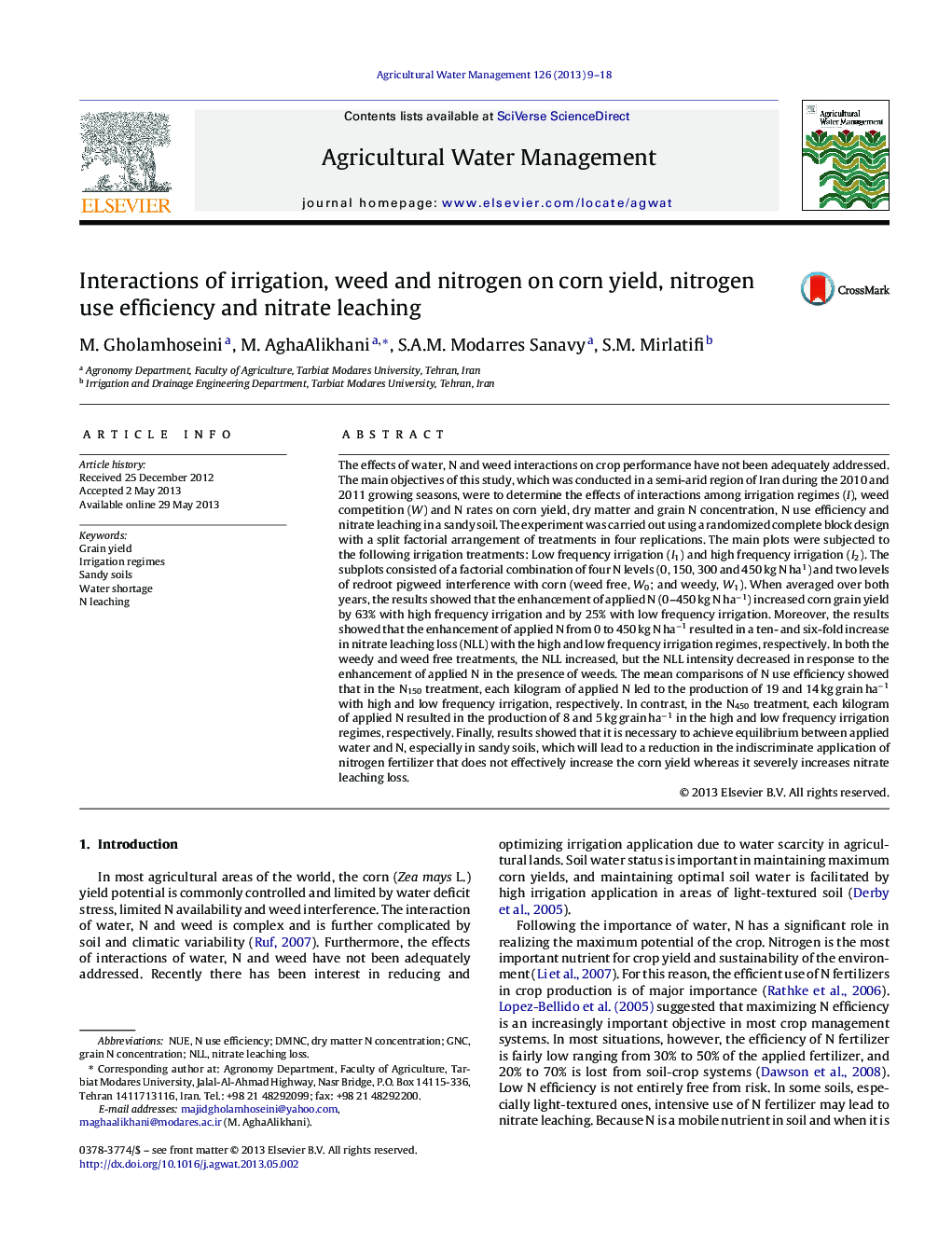| Article ID | Journal | Published Year | Pages | File Type |
|---|---|---|---|---|
| 4478813 | Agricultural Water Management | 2013 | 10 Pages |
•The yield loss due to weed interference increased by enhancing water and N.•Increasing water and N in sandy soils to diminish weed competition is not appropriate.•An increase in soil water enhances corn yield response to N fertilization.•N leaching intensity in the presence of weeds and in response to N decreased.•Impact of low irrigation and weed on N efficiency was intense at low levels of N.
The effects of water, N and weed interactions on crop performance have not been adequately addressed. The main objectives of this study, which was conducted in a semi-arid region of Iran during the 2010 and 2011 growing seasons, were to determine the effects of interactions among irrigation regimes (I), weed competition (W) and N rates on corn yield, dry matter and grain N concentration, N use efficiency and nitrate leaching in a sandy soil. The experiment was carried out using a randomized complete block design with a split factorial arrangement of treatments in four replications. The main plots were subjected to the following irrigation treatments: Low frequency irrigation (I1) and high frequency irrigation (I2). The subplots consisted of a factorial combination of four N levels (0, 150, 300 and 450 kg N ha1) and two levels of redroot pigweed interference with corn (weed free, W0; and weedy, W1). When averaged over both years, the results showed that the enhancement of applied N (0–450 kg N ha−1) increased corn grain yield by 63% with high frequency irrigation and by 25% with low frequency irrigation. Moreover, the results showed that the enhancement of applied N from 0 to 450 kg N ha−1 resulted in a ten- and six-fold increase in nitrate leaching loss (NLL) with the high and low frequency irrigation regimes, respectively. In both the weedy and weed free treatments, the NLL increased, but the NLL intensity decreased in response to the enhancement of applied N in the presence of weeds. The mean comparisons of N use efficiency showed that in the N150 treatment, each kilogram of applied N led to the production of 19 and 14 kg grain ha−1 with high and low frequency irrigation, respectively. In contrast, in the N450 treatment, each kilogram of applied N resulted in the production of 8 and 5 kg grain ha−1 in the high and low frequency irrigation regimes, respectively. Finally, results showed that it is necessary to achieve equilibrium between applied water and N, especially in sandy soils, which will lead to a reduction in the indiscriminate application of nitrogen fertilizer that does not effectively increase the corn yield whereas it severely increases nitrate leaching loss.
